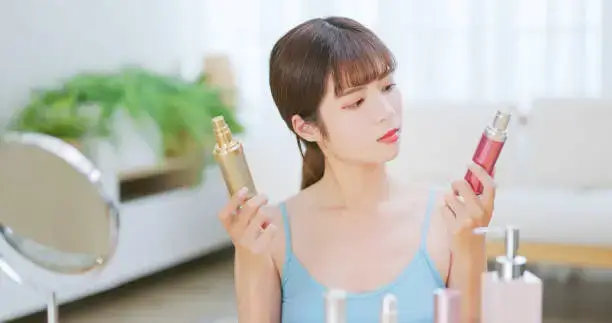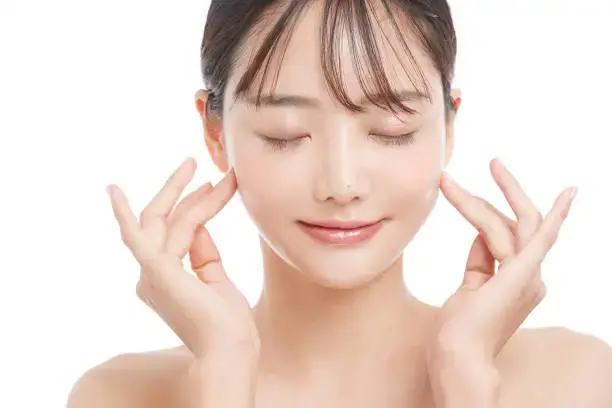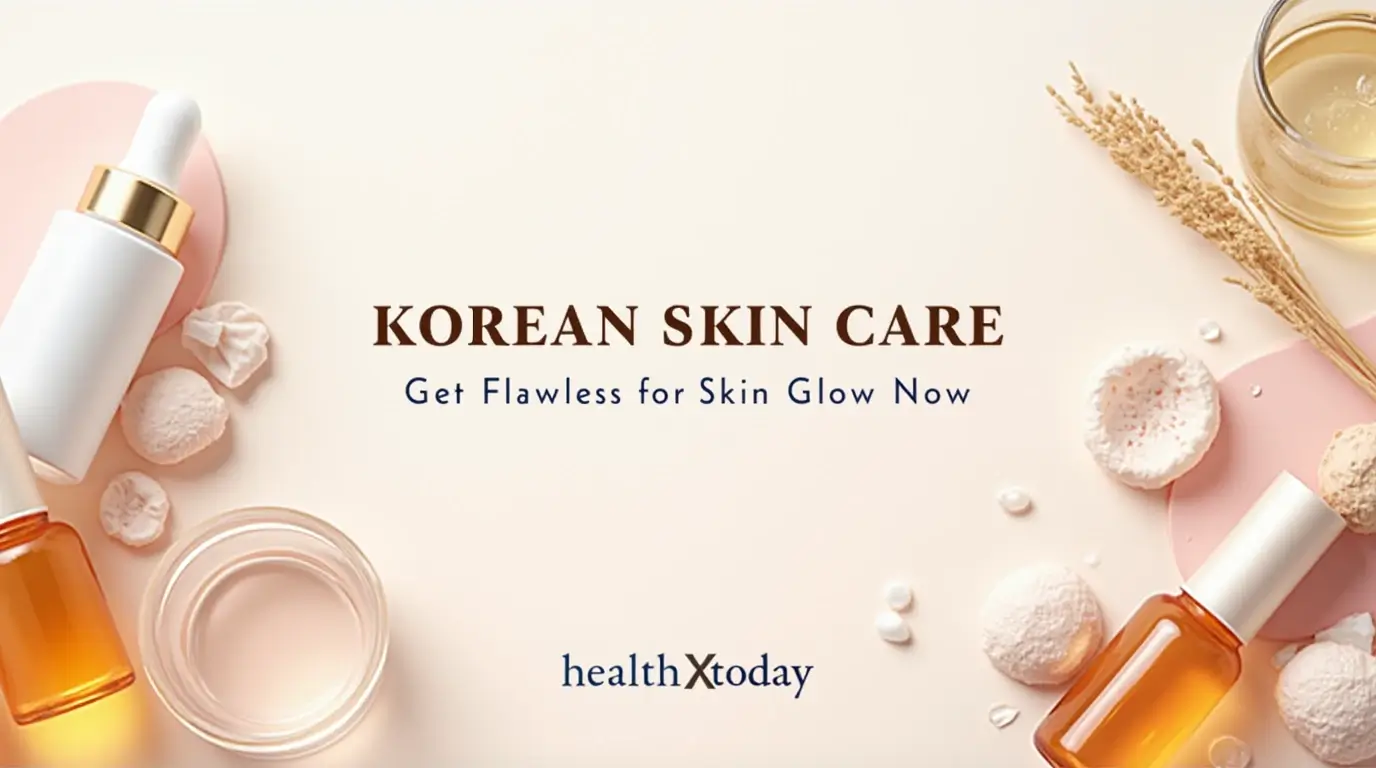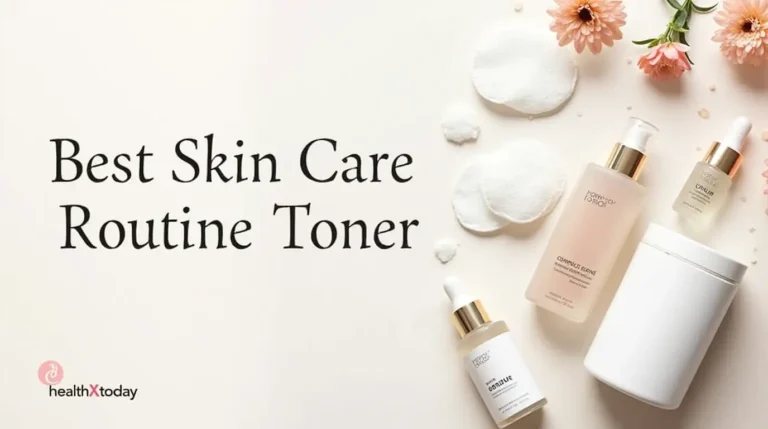We envision a world where everyone has the tools and knowledge to live a balanced, healthy, and fulfilling life. By providing reliable resources, personalized programs, and community support, we aim to be a beacon of hope for those on their health journey.
Table of Contents
Introduction to Korean Skin Care

Korean skin care, often referred to as K-beauty, has gained significant traction in the global beauty industry over the past few years. Originating from South Korea, this skin care philosophy emphasizes prevention, hydration, and a multi-step regimen to achieve luminous and healthy skin. The rise of K-beauty can be attributed to a deep-rooted cultural belief in the importance of skin health, which is a reflection of one’s overall well-being and beauty. Best Skin Care Products; In Korea, skin care is not merely a cosmetic practice, but a vital part of daily life and self-care, often intertwined with various social and cultural norms.
At the heart of the K-beauty phenomenon is the renowned 10-step skin care routine, a systematic approach designed to maximize hydration and maintain skin health. This comprehensive regimen typically includes the following steps: oil cleanser, water-based cleanser, exfoliator, toner, essence, serum, sheet mask, eye cream, moisturizer, and sunscreen. Each step is aimed at addressing specific skin concerns while nurturing the skin’s natural moisture barrier. As a result, many individuals are drawn to this thorough method, contributing to the increasing popularity of Korean beauty products worldwide.
The effectiveness of these products can often be attributed to their unique formulations, which frequently contain traditional ingredients such as green tea, ginseng, and various botanical extracts. Korean skin care brands are known for their innovation and commitment to research, leading to high-quality products that cater to diverse skin types and concerns. Furthermore, the influence of social media and beauty influencers has further propelled the global demand for K-beauty items, as more individuals seek to incorporate these time-honored practices into their own routines. This growing enthusiasm for Korean skin care is not only reshaping beauty standards but also encouraging a broader conversation about self-care and skin health.
The Philosophy Behind Korean Skin Care
Korean skin care is deeply rooted in a philosophy that prioritizes prevention over treatment, emphasizing the long-term maintenance of skin health. The notion of achieving ‘chok chok’, literally translating to ‘dewy’ or ‘moist’, reflects the aspiration for radiant and hydrated skin. This approach encourages individuals to focus on hydration and nourishment through meticulous routines, rather than solely addressing existing skin concerns. The goal is to cultivate skin that not only looks beautiful but is also fundamentally healthy.
Central to this philosophy is the principle of ‘Hanbang’, which refers to traditional Korean herbal medicine. Hanbang utilizes natural ingredients derived from plants and roots, believed to enhance both beauty and health. Many Korean skin care products incorporate these time-honored ingredients, enhancing their formulations with herbal extracts that provide various skin benefits. These natural components are often selected for their ability to promote skin resilience and restore balance, aligning with the overarching goal of holistic skin care.
This emphasis on prevention is reflected in the multi-step Korean skin care routine, which typically includes cleansing, exfoliating, toning, treating, moisturizing, and protecting. Each step is designed to support skin health by using high-quality products that contribute to overall skin integrity. The philosophy promotes gentle cleansing and the application of hydrating and nourishing agents, designed to enhance the skin’s natural barrier.
The meticulous nature of Korean skin care routines illustrates a cultural commitment to self-care. This dedication not only fosters healthy skin but also serves as a therapeutic ritual, promoting mindfulness and well-being. Hence, understanding the philosophies behind Korean skin care reveals not just a regimen, but a lifestyle aimed at fostering healthy, glowing skin that resonates with both beauty and health-consciousness.
The 10-Step K-Beauty Routine Explained

The renowned 10-step Korean skincare routine has gained immense popularity, recognized for its methodical approach to achieving healthy and glowing skin. This regimen comprises several well-defined stages, each designed to address specific skin concerns, which allows individuals to customize their skincare according to their unique requirements. Below is a detailed breakdown of each step in this comprehensive routine.
1. **Oil Cleanser**: The first step involves using an oil-based cleanser to dissolve makeup and excess sebum. This ensures the skin is free from impurities, making it a vital starting point for any skin type, especially for those who wear makeup regularly.
2. **Water-Based Cleanser**: Following the oil cleanse, a water-based cleanser removes any remaining residue. This second cleansing is crucial for ensuring the skin is thoroughly cleansed, catering to those with oily or combination skin types.
3. **Exfoliation**: Exfoliating 1-2 times a week helps slough away dead skin cells, revealing a smoother, brighter complexion. Those with sensitive skin should opt for gentler, chemical exfoliants rather than harsh physical scrubs.
4. **Toner**: A toner helps to balance the skin’s pH level post-cleansing and prepares the skin for better absorption of subsequent products. Hydrating toners work best for dry skin, while astringent formulas suit oily skin types.
5. **Essence**: This lightweight liquid is packed with active ingredients, providing hydration and aiding in skin repair. It is especially beneficial for all skin types, enhancing overall skin texture.
6. **Serum**: Targeted serums focus on specific concerns, such as pigmentation or fine lines. Individuals should choose serums based on their skincare needs, ensuring optimal results.
7. **Sheet Mask**: Incorporating a sheet mask into the routine 1-2 times a week can offer intense hydration and nourishment. Selecting masks that align with skin concerns will enhance their efficacy.
8. **Eye Cream**: A specialized eye cream can address puffiness, dark circles, or fine lines. Incorporating this step is essential for maintaining youthful skin in the delicate eye area.
9. **Moisturizer**: Selecting the right moisturizer can lock in hydration and create a barrier against environmental stressors. Those with oily skin may prefer gel-based moisturizers, while creamier formulations are better suited for dry skin types.
10. **Sunscreen**: The final step is crucial, as daily application of a broad-spectrum sunscreen protects the skin from UV damage. This step is non-negotiable for all skin types, ensuring prolonged skin health.
Through the careful application of these ten steps, individuals can create a robust routine tailored to their skin’s needs, harnessing the full power of K-beauty principles in pursuit of flawless skin.
Key Ingredients in Korean Skin Care Products
Korean skin care is renowned for its innovative formulations and effective ingredients. Among the standout components are snail mucin, green tea, hyaluronic acid, and ginseng, each offering unique benefits that contribute to healthy, glowing skin.
Snail mucin is a noteworthy ingredient celebrated for its hydrating and restorative properties. Rich in glycoproteins, glycolic acid, and hyaluronic acid, it promotes cell regeneration and helps alleviate scarring and fine lines. Its ability to soothe inflammation makes it an ideal choice for those with sensitive or acne-prone skin, enhancing the skin’s overall texture and radiance.
Another key ingredient, green tea, is revered for its antioxidant capabilities. With a high concentration of polyphenols, it effectively combats free radicals that lead to premature aging. Additionally, green tea possesses anti-inflammatory properties, making it beneficial for calming redness and irritation. Its application in various products, from toners to serums, further reinforces its versatility in promoting clear and revitalized skin.
Hyaluronic acid stands out as a stellar hydrating agent, able to retain moisture and plump the skin. Its molecular structure allows it to deeply penetrate the skin barrier, thereby providing lasting hydration and enhancing elasticity. This ingredient is especially useful in dry climates or for individuals with dehydrated skin, promoting a smoother and firmer appearance.
Lastly, ginseng is another prized ingredient in Korean skin care, known for its energizing effects on the skin. Rich in antioxidants and nutrients, ginseng can improve circulation and promote a brighter complexion. It is often used in formulations aimed at revitalizing tired skin or diminishing dullness, effectively delivering a youthful glow.
Each of these key ingredients underscores the importance of thoughtful formulation in Korean skin care products, making them fundamental for anyone seeking to achieve flawless skin.
Choosing the Right Products for Your Skin Type

Understanding your skin type is essential before embarking on your journey through the diverse world of Korean skin care. The primary skin types are dry, oily, combination, and sensitive. Each type presents unique characteristics and requires tailored care. The right products can significantly enhance your skin’s health and appearance.
For those with dry skin, which often feels tight, rough, or flaky, hydrating products are key. Look for hydrating serums enriched with glycerin or hyaluronic acid. Additionally, creamy moisturizers containing natural oils, such as jojoba or shea butter, can help lock in moisture. Exfoliation should be gentle, with products that contain AHA, which not only removes dead skin but also moisturizes.
Oily skin, characterized by excess sebum and a shiny complexion, benefits from lightweight formulations. Gel-based moisturizers and non-comedogenic products that contain salicylic acid can help manage oil production without clogging pores. It is also crucial to incorporate a gentle exfoliator containing BHA to deeply cleanse and reduce breakouts.
Those with combination skin, which exhibits characteristics of both dry and oily skin, should look for balanced products. A lightweight, hydrating lotion can provide moisture without exacerbating oily areas. Additionally, using targeted treatments, such as clay masks for oily zones and rich creams for dry patches, can be beneficial.
Lastly, individuals with sensitive skin should prioritize gentle formulations. Look for hypoallergenic products free from harsh fragrances and alcohol. Ingredients like aloe vera, centella asiatica, and chamomile can soothe irritation and promote healing. Incorporating fewer but high-quality products, such as a mild cleanser and nourishing moisturizer, can also help minimize sensitivity.
Incorporating K-Beauty into Your Routine
Incorporating K-beauty into your existing skincare regimen can enhance your approach to achieving a radiant and healthy complexion. The key is to make gradual changes rather than overhauling your entire routine at once. This enables you to assess how your skin reacts to new products and minimizes the potential for irritation or adverse reactions.
Begin by identifying the specific concerns you wish to address, such as dryness, acne, or signs of aging. With a focused goal, select a couple of K-beauty products that specifically target these issues. For instance, you might introduce a hydrating essence or a gentle exfoliating toner to begin with. It’s advisable to use these products alongside your current routine to evaluate their effectiveness without causing disruption.
When adding new items, start with the lighter formulations before progressing to heavier ones. This aligns with the K-beauty philosophy of layering products. Begin your morning or evening regimen with a lightweight essence, followed by a moisturizer and sunscreen during the day, or a nourishing cream at night. Make sure to give your skin a few days to adjust to each new addition before proceeding to the next one. Furthermore, avoid using multiple new products simultaneously, as this can overwhelm your skin and make it difficult to identify which product leads to improvement or irritation.
Pay attention to ingredient labels, as K-beauty emphasizes natural components. Look for products containing soothing ingredients such as green tea, honey, or aloe vera. Finally, maintain a journal documenting your skincare journey, which allows you to track what works and what doesn’t. This methodical approach ensures a smooth integration of K-beauty into your routine, fostering a step-by-step evolution toward achieving flawless skin.
Common Myths About Korean Skin Care

The global phenomenon of Korean skin care, often characterized by elaborate routines and innovative products, has led to the propagation of various myths. One prevalent misconception is that the famed 10-step routine is mandatory for everyone seeking flawless skin. While the multi-step approach can yield impressive results, it is crucial to understand that skin care is not a one-size-fits-all endeavor. Individual skin types and concerns vary greatly, and what works for one person may not be suitable for another. Many find success with simplified routines, focusing on essential products tailored to their unique skin concerns. Thus, customizing your skin care regimen is key to achieving desired results.
Another widespread belief is that K-beauty products are exclusively designed for the younger demographic. This notion disregards the comprehensive range of products available in the K-beauty market that cater to various age groups and skin concerns. In fact, many K-beauty brands design their products with the understanding that skin changes as we age. Ingredients commonly found in these products, such as hyaluronic acid and peptides, are beneficial for all ages, offering hydration and promoting skin elasticity. It is essential to dispel the misconception that K-beauty is only for the young and to recognize its suitability for individuals of all ages.
Additionally, some consumers believe that K-beauty products need to be used in conjunction with a long routine to be effective. This idea can create unnecessary pressure and lead to feelings of inadequacy among those who may prefer shorter regimens. The truth is that the effectiveness of products is primarily determined by quality, formulation, and ingredients rather than the length of routine. By understanding these myths, consumers can develop a more informed and nuanced understanding of Korean skin care, enabling them to select the right products and practices that align with their unique skin journey.
Sustainability and Ethical Considerations in K-Beauty
The Korean beauty (K-Beauty) industry has garnered significant global attention, not only for its innovative products and effective skincare routines but also for its growing emphasis on sustainability and ethical practices. In recent years, consumers have become increasingly aware of the environmental and social implications of their purchasing decisions, prompting many K-Beauty brands to adopt more conscientious approaches. One of the primary areas of focus is the implementation of cruelty-free practices. Many leading K-Beauty brands have committed to ensuring that their products are not tested on animals, thereby aligning themselves with a global movement advocating for animal rights.
In addition to cruelty-free initiatives, eco-friendly packaging has gained traction within the K-Beauty realm. Brands are now prioritizing the use of recyclable and biodegradable materials, reducing reliance on single-use plastics, and exploring alternative packaging solutions. This shift not only minimizes environmental impact but also resonates with environmentally-conscious consumers who seek brands that mirror their values. Alongside packaging changes, there is a marked rise in brands that emphasize the use of natural ingredients sourced sustainably. These brands recognize the importance of both skin health and environmental stewardship, opting for ingredients that are responsibly harvested and offer minimal ecological disruption.
Moreover, consumer transparency has become a cornerstone of ethical practices in the K-Beauty landscape. Many brands are now openly sharing their sourcing practices and the justification behind the ingredients they use, fostering trust and accountability among consumers. This movement towards sustainability is likely to continue influencing the Korean beauty sector as awareness grows around the interconnectedness of consumer choices, environmental health, and social responsibility. By integrating sustainable practices into their business models, K-Beauty brands not only contribute to a healthier planet but also cater to a discerning clientele that values ethics as much as efficacy.
Conclusion: Achieving Your Best Skin with Korean Skin Care
In summarizing the intricate world of Korean skin care, it becomes evident that achieving flawless skin is not merely a task, but rather a journey that requires dedication and an understanding of one’s unique skin needs. The Korean skin care routine, renowned for its multi-step process, offers a comprehensive approach that emphasizes hydration, nourishment, and protection. Through the layered application of various products, individuals can tailor their regimen to enhance their specific concerns, whether that be dryness, pigmentation, or signs of aging.
Key takeaways from this guide include the importance of integrating high-quality ingredients such as hyaluronic acid, snail mucin, and green tea extract, all of which are staples in Korean formulations. Furthermore, the practice of double cleansing and regular exfoliation cannot be overlooked, as these steps play a crucial role in maintaining clear and radiant skin. Consistency and patience are vital; results may take time to manifest, yet the long-term benefits are well worth the wait.
It is also essential to approach your skin care journey with an open mind. Experimentation is encouraged to discover which products resonate best with your skin type and personal preferences. What works for one individual may not work for another, and this is a fundamental aspect of finding a truly effective skin care routine. As you embark on your exploration of Korean skin care, remember the significance of listening to your skin and adjusting your regimen as needed.
Ultimately, Korean skin care is not just a regimen; it is a holistic approach to self-care and wellness. By committing to this journey with an understanding of the process and its principles, you will unlock the potential for your best skin yet.
Did You Try this tips ?
There are no reviews yet. Be the first one to write one.
blood work brain health cancer treatment climate health diabetes treatments digestive health disease management disease mapping exercise plan fitness tips hair care hair growth hair treatment health foods health insurance health secrets health tips healthy habits healthy recipes heart disease home workouts immune boost immune foods keto delivery keto plan keto recipes kidney disease lifestyle diseases medicine innovation melanoma treatment mental health morning exercise natural remedies non melanoma nutritional advice raw nutrition skin cancer skin care skin health sleep exercise sleep technology telemedicine services viral threats walking benefits weight loss
korean skin care: get Flawless for Skin glow1 now
Korean skin care, often referred to as K-beauty, has gained significant traction in the global beauty industry over the past few years. Originating from South Korea, this skin care philosophy emphasizes prevention, hydration, and a multi-step regimen to achieve luminous and healthy skin. The rise of K-beauty can be attributed to a deep-rooted cultural belief in the importance of skin health, which is a reflection of one’s overall well-being and beauty. Best Skin Care Products; In Korea, skin care is not merely a cosmetic practice, but a vital part of daily life and self-care, often intertwined with various social and cultural norms.








